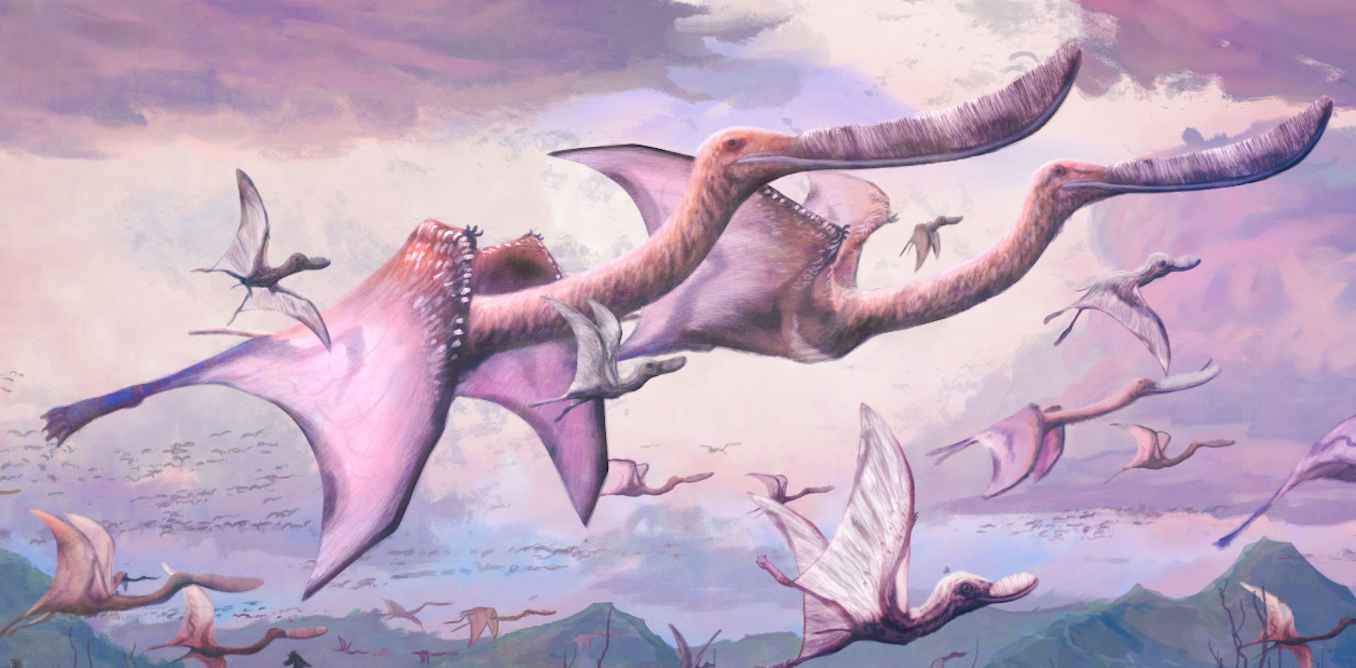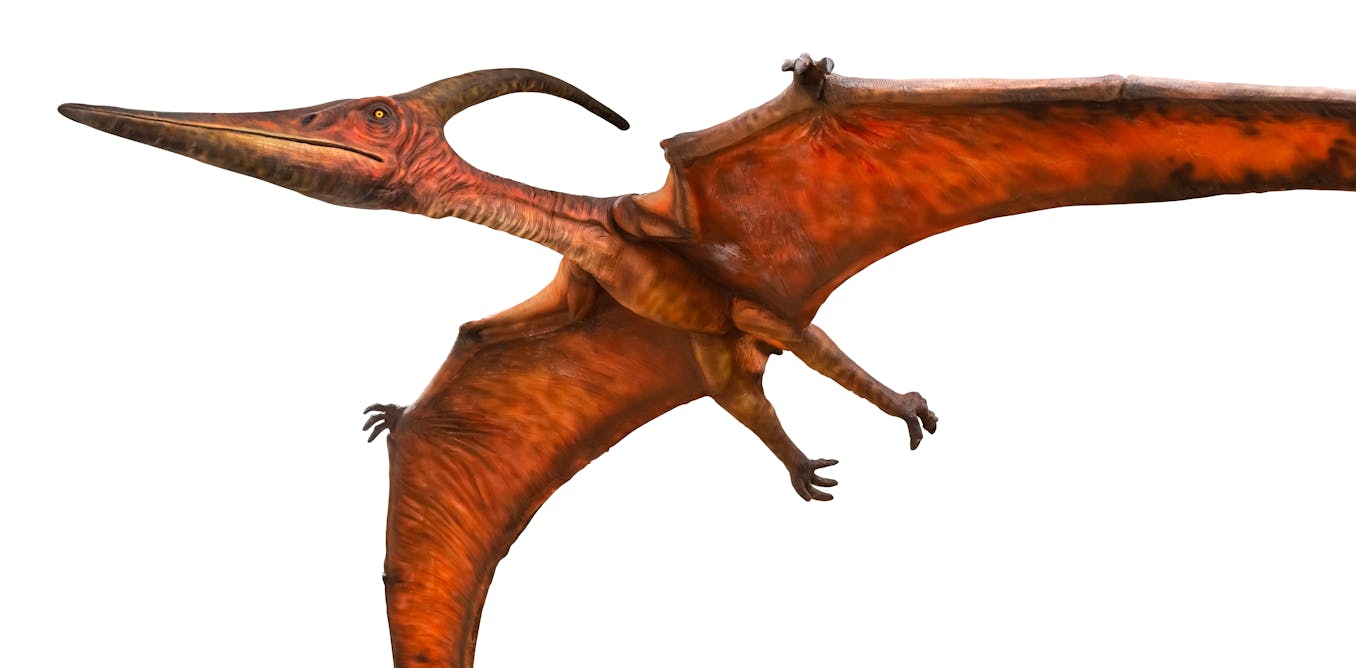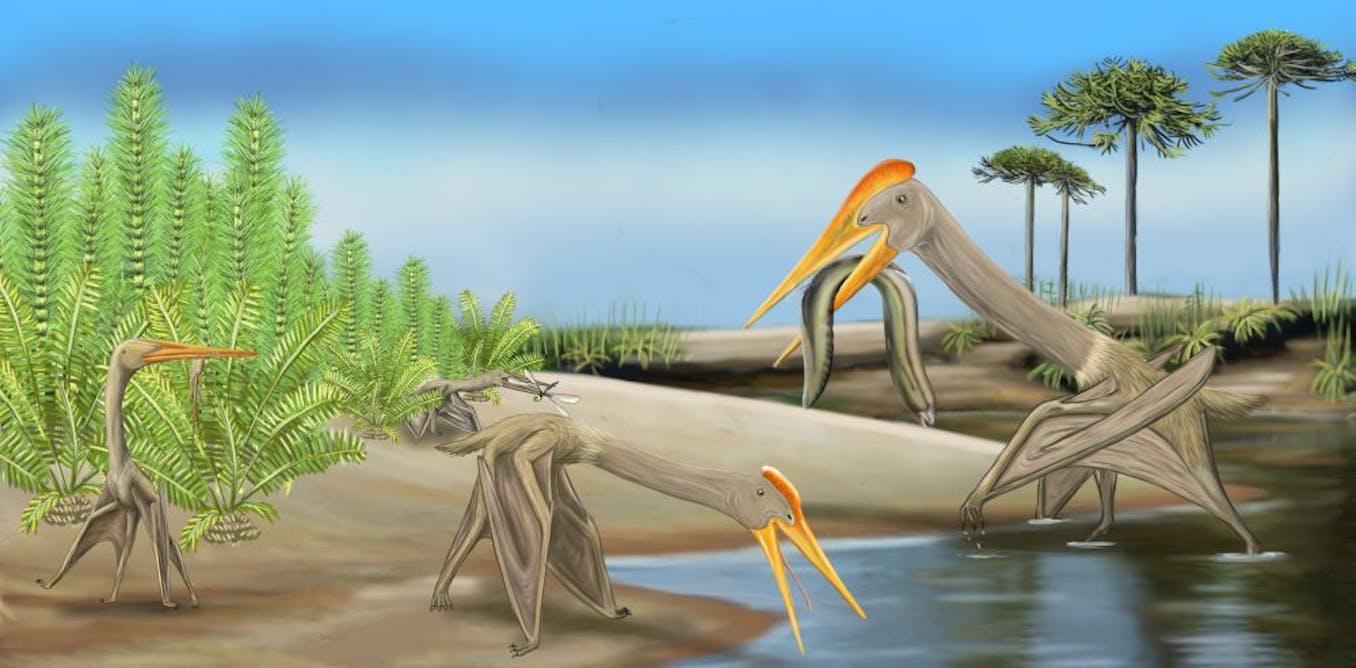How pterosaurs learned to fly: scientists have been looking in the wrong place to solve this mystery
New findings may have solved the debate around why scientists have never found the missing link between dinosaurs and pterosaurs.
Emma Dunne, Assistant Professor in Paleobiology, Friedrich-Alexander-Universität Erlangen-Nürnberg
• conversation
June 18, 2025 • ~8 min
June 18, 2025 • ~8 min
How pterosaurs can inspire aircraft design
Looking back in time could inspire the aircraft innovations of the future.
Michael Habib, Adjunct Professor, Biology, College of the Canyons
• conversation
June 13, 2025 • ~10 min
June 13, 2025 • ~10 min
A 149 million-year-old pterosaur is Britain’s largest flying animal – how scientists proved it from a single finger bone
The Jurassic pterosaur’s size was estimated from only its finger bone.
Jason Gilchrist, Lecturer in the School of Applied Sciences, Edinburgh Napier University •
conversation
Sept. 12, 2024 • ~8 min
Sept. 12, 2024 • ~8 min
Newly identified prehistoric pterosaur will help us understand evolution of flying reptiles
The Isle of Skye has a rich palaeontological heritage, so perhaps it’s no surprise scientists made an important discovery there.
Paul Barrett, Individual Merit Researcher, Natural History Museum •
conversation
Feb. 6, 2024 • ~7 min
Feb. 6, 2024 • ~7 min
Fossil study brings us one step closer to revealing how 'flying dinosaurs' took flight
Prehistoric reptiles like pterodactyls took flight long before bats and birds, but we don’t know how it happened.
Ben Igielman, PhD Candidate, Palaeontology, University of Oxford
• conversation
Jan. 17, 2023 • ~6 min
Jan. 17, 2023 • ~6 min
Baby giant pterosaurs may have driven smaller species extinct, fossil discovery shows
We examined pterosaur jaw fragments from the Moroccan desert to understand more about how these creatures evolved.
David Martill, Professor of Palaeobiology, University of Portsmouth •
conversation
Nov. 11, 2021 • ~7 min
Nov. 11, 2021 • ~7 min
Largest ever flying creatures had longer necks than giraffes – we found out how these pterosaurs kept their heads up
Gigantic flying reptiles had impressive wingspans of up to 12 metres – and a special trick in their necks.
Cariad Williams, PhD Candidate, Paleoentomology, University of Illinois at Urbana-Champaign
• conversation
April 14, 2021 • ~7 min
April 14, 2021 • ~7 min
/
2






